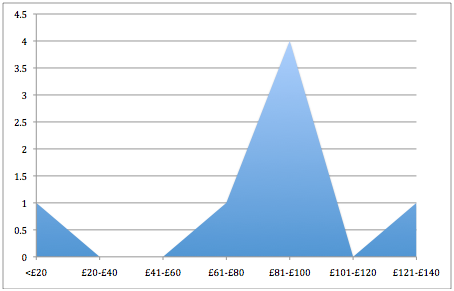Cosplaying has grown drastically as a pastime in recent
years.
Since the early 90s, Cosplay has gathered momentum in
popular culture, though the phrase ‘Cosplay’ was coined in 1983 in Japan. It is
a combination of two words, namely ‘costume’ and ‘play’ and is a hobby in which
the Cosplayer wears fashion and accessories to replicate the image of a
specific character from sources such as Manga, Anime, Comic Books and Video
Games. Most ‘Cosplayers’ will engage in some form of role-play, re-enacting
their idolised character’s persona and activities.
It is unclear as to when the practice originated, but to
dress up in costume related it has been in existence for numerous years. In
more recent years its following has increased substantially. For the first time
at an American convention, ticket sales have had to be capped due to the
ever-heightening numbers inside the convention halls. From experience, it could
well be not too long before we see the same occurring in the UK and at other
worldwide cons.
Manufacturers have, for some time, offered elements towards
full costumes for sale, such as replica swords, wigs and defining features, but
with this cult gaining more momentum by the day, more and more are offering full
costumes for sale in the states, and gradually more so in the UK. Many
individuals also custom-make their gear so as to accurately recreate what they
see on-screen (after all, not all commercially available inventory is 100%
accurate.) It is an activity spread widely across the demographics; from old,
retiring gentlemen to young wannabe princesses, from the poorest of the poor to
the richest of the rich, its appeal is unlimited.
But why does it appeal so greatly to so many?
What does ‘Cosplaying’ have to offer the ‘Cosplayer’?
I know several people that fall into this grouping, but have
never delved much deeper than asking what it is all about. To help my
understanding, I created an on-line survey, which I sent out to those I knew,
who then sent it on to those they knew, asking questions which, I hoped, would
answer some of my own questions, as well shedding light on the hobby to those
who are still none-the-wiser.
The link below links to the survey that I created and
circulated amongst the ‘Cosplayers.’
Some of my results have been shown in a previous post.
However, I was not expecting some of the results that I received.
I shall start by analysing the responses to question 2. I
know that some features, or entire ‘Cosplays,’ can cost well into hundreds of
pounds, sometimes even thousands. It comes as quite a shock that only 2 of my
responders have spent more than £140, with the majority spending between £70
and £90 on their gear. It could be that these are ‘novices’ so to say, and
still finding their feet in the field, or indeed that they have come into the hobby
at a time when people are being more careful with money. However, given how
much may be required to build a full Cosplay, this is still a surprisingly low
amount.
Supporting my assumption that the Cosplay following here in
the UK is only just starting to grow, the majority of those who took my survey
responded to question 5 by answering that they purchase most of their Cosplays and
features not only from online sources, but import them from online non-UK
stores. This doesn't come as a surprise to me, as, to the best of my knowledge,
there are very few stores that supply even some features for Cosplays, the only
one I am consciously aware of being ‘Tokyo Toys’ in London’s Piccadilly Circus.
This could, perhaps, account for the few responses that selected the ‘buy in
store’ choice.
Whilst import seems to be the most used purchase method, there are almost as many who opt to hand-make their Cosplay, tailoring it to fit their exact body shape and including the features where and how they feel that they ought to be so.
Whilst import seems to be the most used purchase method, there are almost as many who opt to hand-make their Cosplay, tailoring it to fit their exact body shape and including the features where and how they feel that they ought to be so.
One query I wanted to answer was how often people wore their
Cosplays. I knew that it was common practice to wear them at conventions, but
were they worn at any other times?
44% of my respondents replied that they do only wear them at conventions, such as MCM and Hyper Japan. However, much to my interest, several people wore them once or twice a month, whilst one chose to wear theirs at least once a week. Perhaps my favourite response is that which reads ‘whenever I want to.’ It becomes clear that this is not just a thing done when en-mass, but continued in an individual’s own free time too.
My final question asked why
people who Cosplay do so. I had to leave this as an open questions, as there
were too many variables, but I was confident that there would be similar themes
in the answers. And indeed there were.
Through various words, the general consensus is that
Cosplaying allows you to be your ideal person. You can ‘embody characters that you otherwise wouldn't have the
opportunity to be,’ pretending to have ‘awesome powers’ and ‘mess with
the public’s heads.’
There
is a freedom that comes with Cosplaying that people wouldn't normally be able
to experience, because you can be who you want to be without any constraints; it
is a way of expressing your individuality. There is also a major social aspect
to it – the numbers that attend conventions and external meetings in their
costumes, it becomes one big family. It can well be said that the conventions
can feel almost party-like at times+, with music, dancing and socialising all
occurring.




















































